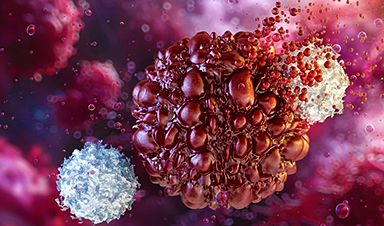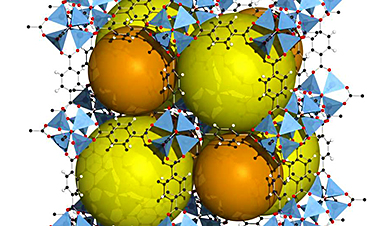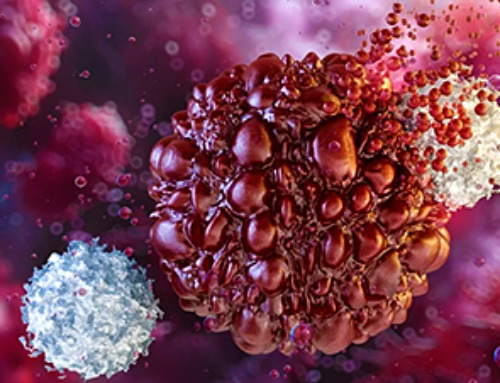Cell membrane-coated nanoparticles, applied in targeted drug delivery strategies, combine the intrinsic advantages of synthetic nanoparticles and cell membranes. Although stem cell-based delivery systems were highlighted for their targeting capability in tumor therapy, inappropriate stem cells may promote tumor growth.
A review published in the journal Materials Today Bio summarized the role of stem cell membrane-camouflaged targeted delivery system in tumor therapy and focused on the underlying mechanisms of stem cell homing toward target tumors. Nanoparticle-coated stem cell membranes have enhanced targetability, biocompatibility, and drug loading capacity.
Furthermore, the clinical applications of induced pluripotent stem cells (iPSCs) and mesenchymal stem cells (MSCs) were investigated as membrane-camouflaged targeted delivery systems for their anti-tumor therapies. In concurrence, the stem cell membrane-coated nanoparticles have immense prospects in tumor therapy.
Cell Membrane-Coated Nanoparticles Towards Tumor Therapy
Cell-based targeted delivery systems have low immunogenicity and toxicity, innate targeting capability, ability to integrate receptors, and long circulation time. Cells such as red blood cells, platelets, stem cells, tumor cells, immune cells, and even viral/bacterial cells can serve as effective natural vesicles.
MSCs derived from the umbilical cord (UC-MSCs), bone marrow (BM-MSCs), and adipose tissue (ATMSCs) are utilized in clinical applications. However, iPSCs are preferable over MSCs in clinical applications due to their easy fetch by transcription factor-based reprogramming of differentiation of somatic cells.
Stem cells (MSCs/ iPSCs) can be easily isolated and used as drug delivery systems for tumor therapy. Stem cell-based delivery systems have inflammation or tumor lesions targeting capacity. However, stem cells are often entrapped in the lung due to their size, resulting in microembolism.
Cell membrane-coated nanoparticles are applied in targeted delivery strategies. To this end, stem cell membrane-coated nanoparticles have tremendous prospects in biomedical applications. Although previous reports mentioned the role of cell membrane-coated nanocarriers in tumor therapy, delivery systems based on stem cell membranes have not been explored extensively.
Stem Cell Membrane-Coated Nanoparticles for Anti-Tumor Therapy
Stem cell membrane-coated nanoparticles obtained from stem cells have complex functioning and can achieve biological interfacing. Consequently, stem cell membrane-coated nanoparticles served as novel drug delivery systems that could effectively target the tumor.
Previous reports mentioned the preparation of doxorubicin (DOX) loaded, poly (lactic-co-glycolic acid) (PLGA) coated MSC membrane-based nanovesicles, which showed higher cellular uptake than their PLGA uncoated counterparts. Similarly, the DOX-loaded MSC membrane-coated gelatin nanogels showed enhanced storage stability and sustained drug release.
Thus, the stem cell membrane-coated nanoparticles served as novel carriers for stem cells and facilitated the targeted delivery of the drugs at the tumor site. Since the stem cell membrane-coated nanoparticles had good targeting and penetration abilities, they enhanced the efficiency of chemotherapeutic agents in tumor therapy and minimized the side effects.
Reactive oxygen species (ROS) based photodynamic therapy (PDT) is mediated by photosensitizers with laser irradiations. Previous reports mentioned the development of MSC membrane-based mesoporous silica up-conversion (SUCNPs@mSiO2) nanoparticles that efficiently targeted the tumor due to their high affinity after being coated with MSC membrane.
These cell membrane-coated nanoparticles showed high cytocompatibility (with hepatocyte cells) and hemocompatibility (with blood). Moreover, the SUCNPs@mSiO2 nanoparticles-based PDT therapy under 980-nanometer laser irradiations could inhibit the tumors in vivo and in vitro. Consequently, the stem cell membrane-coated nanoparticles had circulation for an extended time and escaped the immune system, thereby increasing their accumulation at the tumor site.
Stem cell membrane-coated nanoparticles were also applied to deliver small interfering RNA (siRNA) via magnetic hyperthermia therapy and imaging. Previous reports mentioned the preparation of superparamagnetic iron oxide (SPIO) nanoparticles using an MSC membrane that reduced the immune response.
Additionally, the CD44 adhesion receptors were preserved on the surface of the MSC membrane during preparation. These prepared nanovesicles were unrecognized by macrophages, which enabled their stability in blood circulation. The nanosize and tumor homing capacity of MSCs helped the nanovesicles generate a dark contrast in T2-weight magnetic resonance imaging (MRI).
Conclusion
Cell membrane-coated nanoparticles helped fabricate various targeted delivery strategies. Especially, stem cell membrane-coated nanoparticles have the following advantages: stem cells are easy to isolate and expand in vitro. Thus, multilineage potential and phenotypes could be preserved for more than 50 population doublings in vitro.
Stem cell membrane-coated nanoparticles also have an intrinsic capacity to target inflammation or tumor lesions. Hence, these nanoparticles were established for tumor therapy, building a strong foundation for stem cell membrane-mediated delivery systems.
On the other hand, stem cell membrane-coated nanoparticles have the following drawbacks: Despite various sources for collecting MSCs (UC-MSCs/BM-MSCs/ATMSCs), the number of cells obtained is limited, although iPSCs are relatively easy to fetch by reprogramming differentiated somatic cells, the reprogramming is a high-cost step, restricting the clinical applications of iPSCs.
News
Scientist tackles key roadblock for AI in drug discovery
The drug development pipeline is a costly and lengthy process. Identifying high-quality "hit" compounds—those with high potency, selectivity, and favorable metabolic properties—at the earliest stages is important for reducing cost and accelerating the path [...]
Nanoplastics with environmental coatings can sneak past the skin’s defenses
Plastic is ubiquitous in the modern world, and it's notorious for taking a long time to completely break down in the environment - if it ever does. But even without breaking down completely, plastic [...]
Chernobyl scientists discover black fungus feeding on deadly radiation
It looks pretty sinister, but it might actually be incredibly helpful When reactor number four in Chernobyl exploded, it triggered the worst nuclear disaster in history, one which the surrounding area still has not [...]
Long COVID Is Taking A Silent Toll On Mental Health, Here’s What Experts Say
Months after recovering from COVID-19, many people continue to feel unwell. They speak of exhaustion that doesn’t fade, difficulty breathing, or an unsettling mental haze. What’s becoming increasingly clear is that recovery from the [...]
Study Delivers Cancer Drugs Directly to the Tumor Nucleus
A new peptide-based nanotube treatment sneaks chemo into drug-resistant cancer cells, providing a unique workaround to one of oncology’s toughest hurdles. CiQUS researchers have developed a novel molecular strategy that allows a chemotherapy drug to [...]
Scientists Begin $14.2 Million Project To Decode the Body’s “Hidden Sixth Sense”
An NIH-supported initiative seeks to unravel how the nervous system tracks and regulates the body’s internal organs. How does your brain recognize when it’s time to take a breath, when your blood pressure has [...]
Scientists Discover a New Form of Ice That Shouldn’t Exist
Researchers at the European XFEL and DESY are investigating unusual forms of ice that can exist at room temperature when subjected to extreme pressure. Ice comes in many forms, even when made of nothing but water [...]
Nobel-winning, tiny ‘sponge crystals’ with an astonishing amount of inner space
The 2025 Nobel Prize in chemistry was awarded to Richard Robson, Susumu Kitagawa and Omar Yaghi on Oct. 8, 2025, for the development of metal-organic frameworks, or MOFs, which are tunable crystal structures with extremely [...]
Harnessing Green-Synthesized Nanoparticles for Water Purification
A new review reveals how plant- and microbe-derived nanoparticles can power next-gen water disinfection, delivering cleaner, safer water without the environmental cost of traditional treatments. A recent review published in Nanomaterials highlights the potential of green-synthesized nanomaterials (GSNMs) in [...]
Brainstem damage found to be behind long-lasting effects of severe Covid-19
Damage to the brainstem - the brain's 'control center' - is behind long-lasting physical and psychiatric effects of severe Covid-19 infection, a study suggests. Using ultra-high-resolution scanners that can see the living brain in [...]
CT scan changes over one year predict outcomes in fibrotic lung disease
Researchers at National Jewish Health have shown that subtle increases in lung scarring, detected by an artificial intelligence-based tool on CT scans taken one year apart, are associated with disease progression and survival in [...]
AI Spots Hidden Signs of Disease Before Symptoms Appear
Researchers suggest that examining the inner workings of cells more closely could help physicians detect diseases earlier and more accurately match patients with effective therapies. Researchers at McGill University have created an artificial intelligence tool capable of uncovering [...]
Breakthrough Blood Test Detects Head and Neck Cancer up to 10 Years Before Symptoms
Mass General Brigham’s HPV-DeepSeek test enables much earlier cancer detection through a blood sample, creating a new opportunity for screening HPV-related head and neck cancers. Human papillomavirus (HPV) is responsible for about 70% of [...]
Study of 86 chikungunya outbreaks reveals unpredictability in size and severity
The symptoms come on quickly—acute fever, followed by debilitating joint pain that can last for months. Though rarely fatal, the chikungunya virus, a mosquito-borne illness, can be particularly severe for high-risk individuals, including newborns and older [...]
Tiny Fat Messengers May Link Obesity to Alzheimer’s Plaque Buildup
Summary: A groundbreaking study reveals how obesity may drive Alzheimer’s disease through tiny messengers called extracellular vesicles released from fat tissue. These vesicles carry lipids that alter how quickly amyloid-β plaques form, a hallmark of [...]
Ozone exposure weakens lung function and reshapes the oral microbiome
Scientists reveal that short-term ozone inhalation doesn’t just harm the lungs; it reshapes the microbes in your mouth, with men facing the greatest risks. Ozone is a toxic environmental pollutant with wide-ranging effects on [...]





















